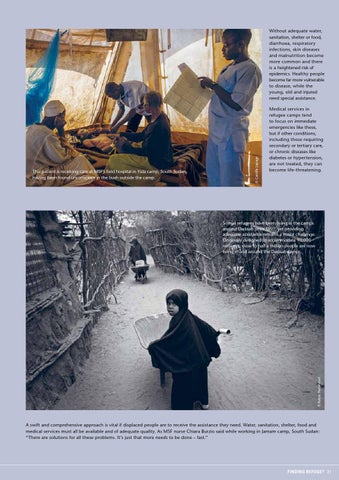This patient is receiving care at MSF’s field hospital in Yida camp, South Sudan, having been found unconscious in the bush outside the camp.
© Camille Lepage
Without adequate water, sanitation, shelter or food, diarrhoea, respiratory infections, skin diseases and malnutrition become more common and there is a heightened risk of epidemics. Healthy people become far more vulnerable to disease, while the young, old and injured need special assistance. Medical services in refugee camps tend to focus on immediate emergencies like these, but if other conditions, including those requiring secondary or tertiary care, or chronic diseases like diabetes or hypertension, are not treated, they can become life-threatening.
© Robin Hammond
Somali refugees have been living in the camps around Dadaab since 1991, yet providing adequate assistance remains a major challenge. Originally designed to accommodate 90,000 refugees, close to half a million people are now living in and around the Dadaab camps.
A swift and comprehensive approach is vital if displaced people are to receive the assistance they need. Water, sanitation, shelter, food and medical services must all be available and of adequate quality. As MSF nurse Chiara Burzio said while working in Jamam camp, South Sudan: “There are solutions for all these problems. It’s just that more needs to be done – fast.”
Finding refuge? 21
